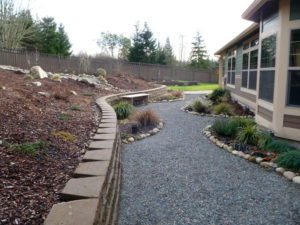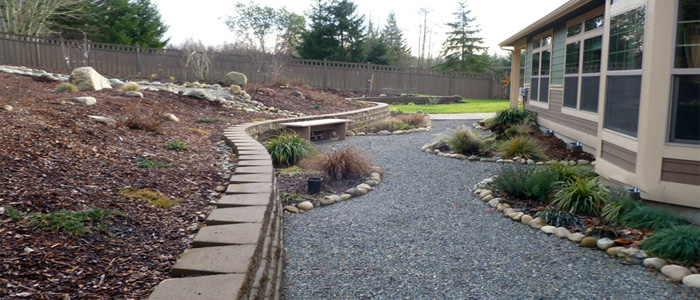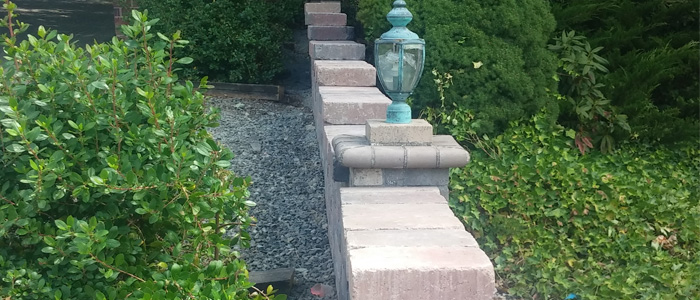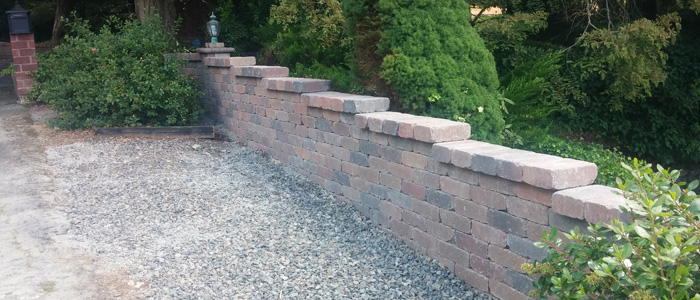A formal retention of a hillside with drainage system behind also creates a terrace effect above.
Retaining Walls
 Several questions must be considered prior to building the proper type of retaining wall. For example, is the soil sand, clay, or some other type of composite? What’s above the wall? A yard, driveway or something heavier like a house. Will the ground above or below be level or sloped? Height and length of the wall? All of these factors will determine whether you will need a Gravity Retaining Wall or a Geogrid Reinforced Retaining Wall.
Several questions must be considered prior to building the proper type of retaining wall. For example, is the soil sand, clay, or some other type of composite? What’s above the wall? A yard, driveway or something heavier like a house. Will the ground above or below be level or sloped? Height and length of the wall? All of these factors will determine whether you will need a Gravity Retaining Wall or a Geogrid Reinforced Retaining Wall.
Gravity Retaining Walls are dependent on their own weight and setback to retain the soil. These types of walls are typically shorter in stature. Allan Block retaining walls are ideal for this type of wall, because they are stacked together and lock into place to form a setback. This setback helps retain and support the soils behind it.
Reinforced retaining walls use some type of reinforcement to give more strength to the walls structure, therefore improving its ability to retain the soils behind it. Segmental Retaining Walls are reinforced with Geogrid or grid. Geogrid is placed between courses of blocks in the wall and rolled back into the slope or hillside during installation to create a stronger and more stable soil mass. These composites work together in providing a more solid structure to the wall. Sometimes grid is not a usable solution on a project due to space or other site conditions, so alternative reinforcement materials need to be used – such as no-fines concrete, soil nails or earth anchors.




